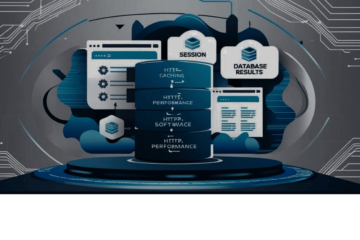Caching dynamic data lies at the intersection of system performance optimization and system architecture design. Implementing an effective caching strategy can be challenging because dynamic data changes frequently while still offering opportunities for caching at the right moments. This blog post explores exclusive and shared caching, two approaches that can help manage dynamic data effectively and boost your application’s performance and scalability.
But before we dive into those approaches, let’s take a step back and discuss why caching dynamic data is so crucial.
Why Do We Cache Synamic Data
In most software systems, caching dynamic data offers the potential for improved system performance, reduced latency, and better resource utilization. Here’s why:
- Services: Imagine a microservice that frequently queries a database for data that remains unchanged for minutes or even hours. Instead of hitting the database repeatedly, caching this data in memory can save time and computational resources.
- Web Applications: Consider a user logging into a web application and fetching their profile data from the database. If they request the same data shortly after, the application can retrieve it from the cache instead of querying the database again. This reduces response time and offloads the backend.
Although dynamic data changes regularly, it often remains static for short periods. Identifying those moments when data is relatively stable can unlock significant performance benefits with caching.
Two Approaches to Caching Dynamic Data
When caching dynamic data, there are two primary approaches to consider: exclusive caching and shared caching. Each has its pros and cons, depending on your application’s needs.

1. Exclusive Cache: Node-Specific Caching
How It Works
In exclusive caching, each application instance maintains its own cache. The cached data is stored in the memory of the individual application node, and there’s no sharing of cached data between instances.
Scenario
Let’s say you have a web application running on multiple nodes behind a load balancer. When Node 1 fetches user profile data from the database, it caches that data locally. Subsequent requests to Node 1 retrieve the data from its cache. However, if a similar request goes to Node 2, the data isn’t cached there, so Node 2 fetches it from the database and caches it locally for future requests.
Advantages
- Low Latency: Data is fetched directly from the node’s memory, offering near-instant access.
- Simplicity: No external cache setup is required, and implementation is straightforward.
Disadvantages
- Data Duplication: Cached data may be duplicated across nodes, increasing overall memory usage.
- Inconsistent Caching: Without intelligent routing, requests might not consistently hit the same node, leading to cache misses and redundant operations.
Optimization with Intelligent Routing
To minimize duplication, you can implement session-based routing to direct subsequent requests from a user to the same node. This approach reduces cache misses but introduces added complexity and can limit scalability.
2. Shared Cache: Centralized Caching
How It Works
In shared caching, all application nodes store and retrieve cached data from a centralized external cache (e.g., Redis or Memcached). This eliminates duplication and provides a single source of truth for cached data.
Scenario
When one node caches a user profile, subsequent requests from other nodes retrieve the same data from the shared cache. This ensures consistency and avoids redundant data storage across nodes.
Advantages
- No Duplication: All nodes share the same cache, reducing memory consumption.
- Scalable: Tools like Redis can handle large datasets and scale horizontally to meet growing demands.
- Simplified Routing: Intelligent routing isn’t necessary because the cache is accessible to all nodes.
Disadvantages
- Slightly Higher Latency: Accessing a shared cache involves a network hop, which adds a few milliseconds of latency compared to an in-memory exclusive cache.
- Operational Complexity: Requires managing an external cache infrastructure and ensuring high availability.
Dynamic Data Caching in Practice
Dynamic data caching often requires consistency mechanisms to avoid serving stale or incorrect data. One common approach is optimistic locking, which helps ensure safe updates to cached data without conflicts.
Optimistic Locking in C# with Redis
using StackExchange.Redis;
var redis = ConnectionMultiplexer.Connect("localhost");
var db = redis.GetDatabase();
string key = "user:1234";
bool UpdateCachedData(string key, string newData)
{
var tran = db.CreateTransaction();
var currentValue = db.StringGet(key);
// Add a version check
tran.AddCondition(Condition.StringEqual(key, currentValue));
// Update the cache value
tran.StringSetAsync(key, newData);
return tran.Execute();
}
if (!UpdateCachedData(key, "New User Profile Data"))
{
Console.WriteLine("Update failed due to concurrent modification.");
}Optimistic Locking in Python with Redis
import redis
redis_client = redis.StrictRedis(host='localhost', port=6379, decode_responses=True)
key = "user:1234"
def update_cached_data(key, new_data):
with redis_client.pipeline() as pipe:
while True:
try:
pipe.watch(key)
current_value = pipe.get(key)
if current_value is None:
raise ValueError("Key does not exist.")
pipe.multi()
pipe.set(key, new_data)
pipe.execute()
break
except redis.WatchError:
continue
finally:
pipe.reset()
try:
update_cached_data(key, "New User Profile Data")
except ValueError as e:
print(f"Update failed: {e}")When to Choose Which Approach
Selecting the right caching strategy—exclusive or shared cache—depends on several factors, such as data size, access patterns, consistency requirements, scalability needs, and infrastructure complexity. Each approach offers distinct advantages and trade-offs. Let’s break it down in more detail.
Exclusive Cache: When to Use It
Exclusive caching, also known as local caching, is well-suited for small, frequently accessed datasets that don’t require strict consistency across nodes. This approach is often chosen when performance and low latency are the top priorities.
Ideal Scenarios for Exclusive Caching
- Small, Static Datasets: Data that doesn’t change frequently, such as configuration settings, feature flags, or currency conversion rates, can be cached locally without concerns about consistency.
- Single-Node or Session-Based Applications: If your application is running on a single node or user requests can be consistently routed to the same node (using session affinity), exclusive caching works well.
- Latency-Sensitive Applications: Exclusive caches offer near-instant access to cached data, making them perfect for low-latency use cases like real-time data processing or gaming applications.
Benefits of Exclusive Caching
- Ultra-Low Latency: Data is retrieved directly from the application’s memory, avoiding network hops.
- Simple Setup: No need for external cache management; caching logic is embedded within each node.
- Reduced External Dependencies: Exclusive caching minimizes the need for external infrastructure, reducing potential points of failure.
Challenges to Watch For
- Data Duplication: Since each node maintains its own cache, the same data might be duplicated across multiple nodes, increasing memory consumption.
- Inconsistent Data: If user requests aren’t routed to the same node, you might encounter cache misses or outdated data.
- Scalability Limits: As the number of nodes grows, managing and coordinating local caches becomes increasingly complex.
Use Case Example:
For a financial application that shows currency exchange rates updated every 10 minutes, exclusive caching on each node works well. The rates are small in size, change infrequently, and don’t require perfect synchronization between nodes.
Shared Cache: When to Use It
Shared caching, also known as centralized caching, is the go-to choice for applications that require consistent data across multiple nodes. This approach is well-suited for large datasets and distributed systems, where duplication and inconsistencies must be minimized.
Ideal Scenarios for Shared Caching
- Dynamic, Frequently Accessed Data: Shared caches are ideal for large, dynamic datasets such as user profiles, product catalogs, or real-time analytics data.
- Distributed Systems: In multi-node environments where users can be routed to any node, a centralized cache ensures all nodes have access to the same data.
- Scalable Applications: Shared caching solutions like Redis and Memcached are designed to handle high loads and can scale horizontally by adding more cache nodes.
Benefits of Shared Caching
- No Data Duplication: Since all nodes share the same cache, memory consumption is significantly reduced.
- Improved Consistency: A shared cache provides a single source of truth, ensuring that all nodes retrieve up-to-date data.
- Simplified Routing: You don’t need complex session affinity or routing logic since all nodes can access the same cache.
Challenges to Consider
- Slightly Higher Latency: Accessing a shared cache involves a network call, adding a few milliseconds of overhead compared to local caching.
- Operational Complexity: Requires additional infrastructure to manage the shared cache, including monitoring, scaling, and ensuring high availability.
- Potential Bottleneck: If the shared cache isn’t properly scaled, it can become a bottleneck for high-traffic systems.
Use Case Example:
A social media application with millions of active users should use shared caching for user profile data. This ensures that any node retrieving profile information gets the most recent version without data duplication or inconsistencies.
Factors to Consider When Deciding
When choosing between exclusive and shared caching, consider the following:
- Data Size and Complexity:
- Small, simple datasets → Exclusive Cache
- Large, complex datasets → Shared Cache
- Consistency Requirements:
- Loose consistency tolerable → Exclusive Cache
- Strict consistency required → Shared Cache
- Latency Sensitivity:
- Ultra-low latency critical → Exclusive Cache
- Can tolerate slight network delay → Shared Cache
- Scalability Needs:
- Single node or small clusters → Exclusive Cache
- Multi-node, scalable systems → Shared Cache
- Operational Complexity:
- Low tolerance for external infrastructure → Exclusive Cache
- Willing to manage external cache infrastructure → Shared Cache
Hybrid Approaches: The Best of Both Worlds
In complex systems, you don’t always have to choose one approach over the other. Hybrid caching strategies combine both exclusive and shared caching to balance latency, scalability, and consistency. For example:
- Use exclusive caching for small, frequently accessed data to reduce latency.
- Use a shared cache for larger datasets that require consistency across nodes.
Conclusion
Choosing the right caching strategy for dynamic data is critical for optimizing system performance and ensuring smooth scalability. Exclusive caching offers ultra-low latency and simplicity, making it an excellent choice for smaller datasets and latency-sensitive applications. However, it requires careful management of duplication and consistency to avoid cache misses and data fragmentation across nodes. For systems with minimal external infrastructure, this approach can be a quick win.
On the other hand, shared caching is the go-to solution for large-scale, distributed applications where data consistency and scalability are essential. Centralized caching reduces data duplication and simplifies routing, making it easier to maintain a single source of truth. While it introduces a slight latency overhead due to network hops, modern shared caching solutions like Redis and Memcached can mitigate these challenges with proper scaling and configuration.
In some cases, a hybrid approach is the best option, blending exclusive and shared caching to balance performance, scalability, and consistency. By strategically combining the two methods, you can ensure that critical data remains instantly accessible while large datasets are centrally managed. In our next article, we’ll explore cache invalidation strategies and discuss how to maintain data freshness without sacrificing performance.



0 Comments